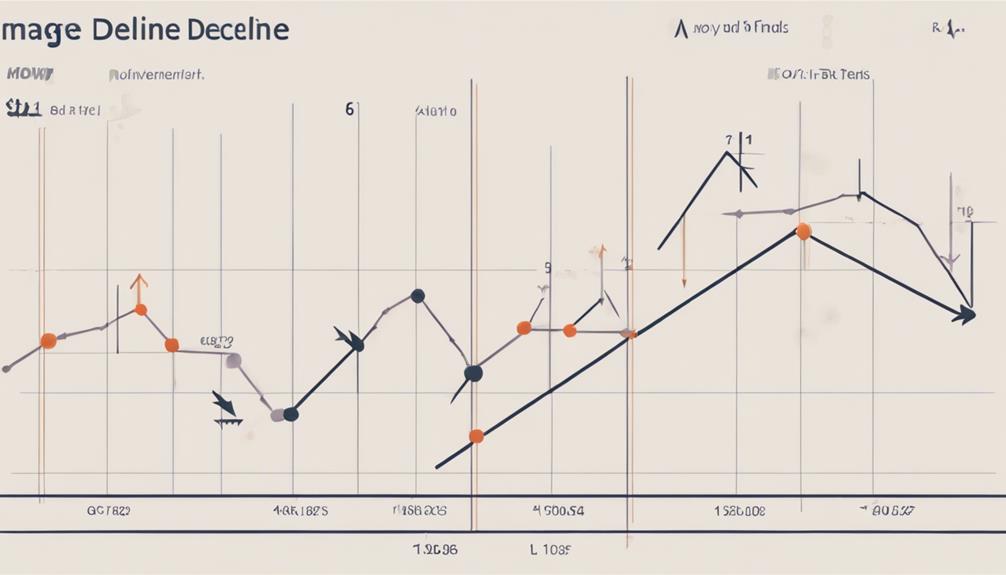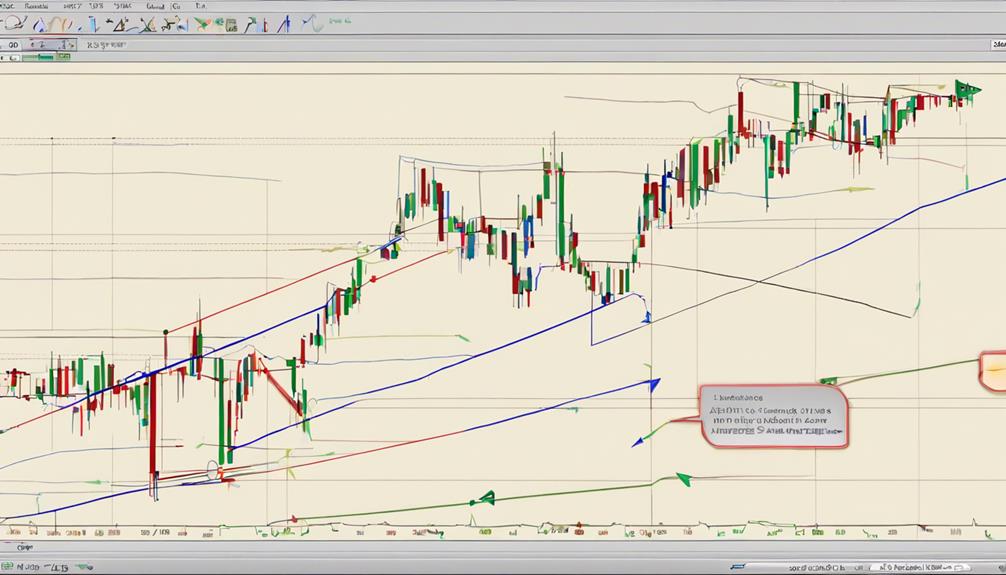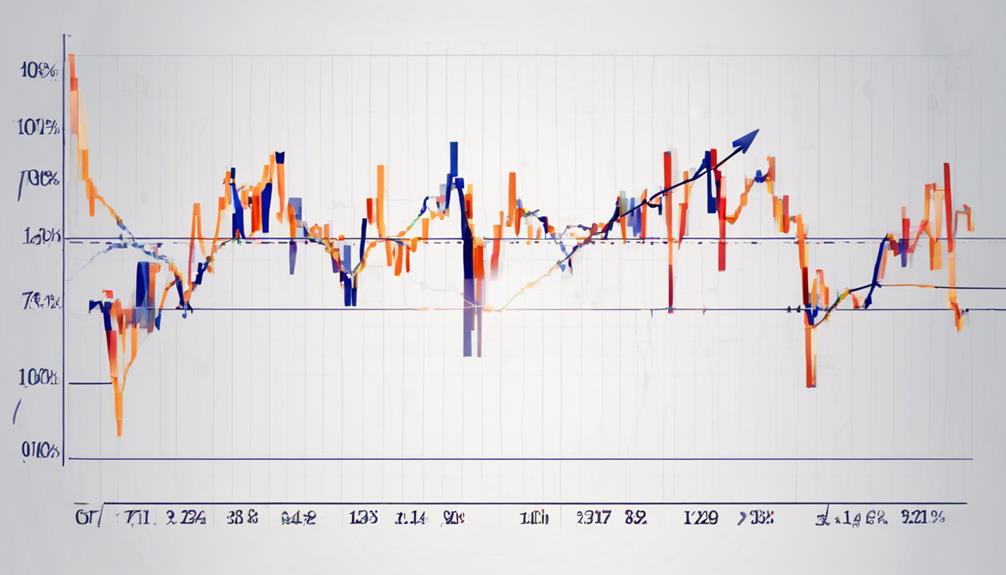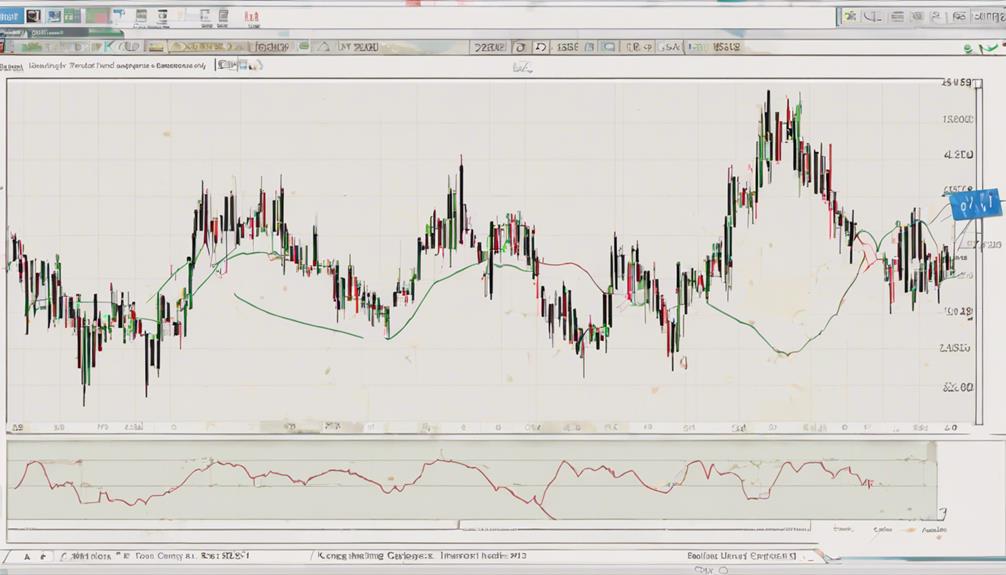If you're looking to master the Advance Decline Line (ADL) and elevate your stock market analysis game, you've come to the right place. Understanding the intricacies of the ADL can be a game-changer for your investment strategies.
From decoding ADL calculations to leveraging it for strategic entries and exits, these five tips will set you on the path to becoming a savvy investor who can navigate market trends with confidence.
Stay tuned to uncover the secrets that will take your ADL proficiency to the next level.
Understanding ADL Calculation
To comprehend how the Advance Decline Line (ADL) is calculated, you must grasp the fundamental concept of net advances and declines in stock market participation on a daily basis. The ADL is derived by taking the difference between advancing and declining stocks. This Market Breadth Indicator encapsulates the daily changes in stock participation.
By adding the Net Advances to the previous ADL value, the current ADL is obtained. This Index serves as a cumulative measure of market sentiment and trend health. Monitoring the ADL over time allows for a deeper understanding of market breadth and sentiment shifts.
It plays a crucial role in revealing the overall health of the market and can assist in identifying potential turning points in sentiment.
Interpreting ADL Trends

When analyzing ADL trends, keep a close eye on the direction of the line as it provides valuable insights into market sentiment and participation levels. A rising ADL suggests a strong market with broad participation in rallies, indicating bullish trends.
Conversely, a falling ADL indicates weakening market breadth and may signal the end of a rally, pointing towards bearish trends. Divergence between the ADL line and stock index can indicate a potential trend reversal.
If the ADL line is at new highs, it confirms a bullish trend, while new lows may signify bearish sentiment. Traders often use the ADL line as a leading indicator for market movements, making it a crucial tool for understanding and predicting market dynamics.
Using ADL for Entry Points

Curious about how to strategically utilize the Advance Decline Line (ADL) for pinpointing entry points in the market?
When using ADL for entry points, look for crossovers above a specific level like 2.0 to validate entry signals. Confirm these points by ensuring ADL remains above key levels for multiple periods, indicating a strong entry opportunity.
ADL serves as a leading indicator, helping you identify potential trend reversals before price movements occur. To enhance entry timing precision, consider combining ADL signals with other technical analysis tools.
Leveraging ADL for Exit Strategies

Pivoting from utilizing the Advance Decline Line (ADL) for entry points, an effective approach involves leveraging ADL for exit strategies. Determine exit points by noting when the ADL line drops below a set level, signaling a potential trend reversal.
Establish specific thresholds based on historical data or market conditions to trigger your exit strategy using the ADL indicator. Combining ADL with other technical indicators can validate exit signals and prevent false alarms.
Stay vigilant during market fluctuations, relying on the ADL line to guide your exit decisions and avoid emotional trading pitfalls. Backtesting various ADL exit strategies is crucial to identifying the most suitable approach aligned with your trading style and risk tolerance.
Can You Provide Some Advanced Tips for Understanding the Advance Decline Line?
Understanding the advanced decline line is crucial for traders. As a beginner’s guide to advance decline, it’s essential to focus on interpreting trends. A rising line indicates market strength, while a declining one suggests weakness. Observing volume alongside the line helps identify imminent market shifts and confirm the accuracy of the indicator. Monitoring market breadth is key for making informed trading decisions.
Can you provide more tips for understanding the Advance Decline Line for beginners?
If you’re looking for more tips on understanding the Advance Decline Line as a beginner, consider consulting a beginner’s guide to advance decline. This resource can provide valuable insights and explanations on how to interpret the ADL and use it as a tool for market analysis and prediction.
Incorporating ADL With Other Indicators

To enhance your analysis and decision-making process, integrating the Advance Decline Line (ADL) with other indicators can provide a more comprehensive understanding of market dynamics and potential trading opportunities. When incorporating ADL with other technical indicators:
- Moving averages: Combining ADL with moving averages can help confirm trends and identify potential reversals.
- Momentum indicators: ADL can be used with indicators like RSI to gauge market strength and overbought/oversold conditions.
- Volume indicators: Pairing ADL with indicators like OBV can provide insights into the strength of price movements.
Frequently Asked Questions
How Do You Use Advance-Decline Line?
To use the advance-decline line, track daily advancing and declining stocks to gauge market participation. Plotting against an index helps identify trends, predict reversals, and assess sentiment. Understand market breadth and risk levels through this data-driven analysis.
What Is a Good Advance-Decline Ratio?
A good Advance-Decline Ratio is typically above 1, signaling positive market sentiment. Ratios around 1.25 are bullish, while below 1 indicates bearishness. Values of 2 or higher are extremely bullish. It offers insights on market breadth and trends.
What Is the Advance-Decline Strategy?
The Advance-Decline Strategy interprets daily stock movements to gauge market sentiment. By analyzing the Advance-Decline Line, traders identify trends, reversals, and turning points. It helps confirm price trends, predict market moves, and enhance trading decisions.
What Is the 10 Day Advance-Decline Line?
The 10-day Advance-Decline Line gauges short-term market breadth by tracking the difference between advancing and declining stocks over 10 days. It provides insights into current sentiment and helps identify short-term trends and potential reversals.
Conclusion
In conclusion, mastering the Advance Decline Line (ADL) can be your compass in the tumultuous sea of stock market fluctuations.
By understanding its calculation, interpreting trends, and using it for entry and exit strategies, you can navigate the market with confidence.
Remember, incorporating ADL with other indicators is like adding layers to your trading strategy, building a sturdy foundation for profitable decision-making.
Embrace the power of ADL and watch your trading skills soar to new heights.
